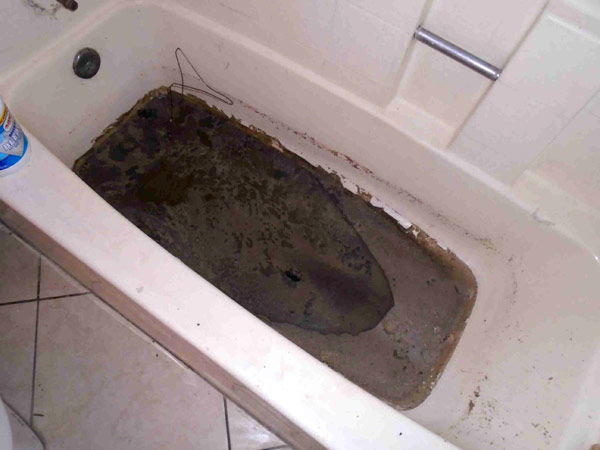My Guide to Discharge Emergence in the Bathtub
My Guide to Discharge Emergence in the Bathtub
Blog Article
What're your concepts about Why sewage is coming up through your bathtub?

Sewer backup in the tub can be a traumatic and unhygienic trouble for any kind of house owner. Not only is it troublesome, yet it also postures serious health and wellness dangers and shows underlying issues with the plumbing system. Comprehending why sewage is turning up via the bath tub is essential for taking suitable action to deal with the issue successfully.
Introduction to the Problem
Typical Reasons for Sewage Back-up
Clogs in the Sewage System Line
Among the most common reasons for sewage back-up is a blockage in the sewage system line. This can take place as a result of the build-up of particles, oil, or foreign objects in the pipes, avoiding proper circulation and causing sewer to back up right into your bath tub.
Tree Origin Breach
Tree roots looking for wetness and nutrients can penetrate drain lines via little splits or joints. Gradually, these roots can grow and increase, causing substantial damage to the pipes and leading to sewage back-up concerns.
Comprehending the Trouble
When sewer starts backing up into the tub, it's a clear sign of a trouble with the drainage system. The wastewater that ought to be streaming far from your home is rather locating its back right into your living space, which can cause substantial damage and health hazards.
Possible Causes
A number of factors can add to sewer backup in the bathtub. From obstructions in the drain line to problems with the plumbing infrastructure, recognizing the source is crucial for finding a solution.
Aging Framework
Older homes may have outdated plumbing systems that are much more at risk to rust, fractures, and deterioration. As pipelines age, they come to be more susceptible to leaks and blockages, boosting the chance of sewer backup events.
Heavy Rainfall or Flooding
During durations of heavy rainfall or flooding, the sewer system may become overloaded with excess water, triggering back-ups and overflows. This can cause sewage supporting into bath tubs and other components inside the home.
Signs of Sewage Backup
Foul Odors
Unpleasant odors rising from drains or components, especially in the restroom, might show sewage back-up issues. These smells are commonly solid and consistent, signaling a problem that calls for instant interest.
Slow Draining Fixtures
Bath tubs, sinks, and bathrooms that drain slowly or not whatsoever could be experiencing sewage backup. If several components are affected concurrently, it's likely that the issue originates from a common point, such as the major drain line.
Gurgling Sounds
Unusual gurgling or gurgling sounds coming from drains when water is running elsewhere in your home are a measure of air entraped in the plumbing system. This air buildup can arise from sewer backup and should be checked out promptly.
Health Dangers Associated with Sewage Back-up
Contamination of Water
Sewage backup can infect the water in your home, posturing a severe wellness risk to you and your family. Direct exposure to infected water can bring about intestinal problems, skin infections, and other illnesses.
Mold Growth
Wetness from sewage back-up can produce optimal conditions for mold and mildew growth in your home. Mold and mildew spores can intensify respiratory problems and cause allergies in sensitive people, making prompt cleaning necessary.
Spread of Condition
Sewage consists of harmful germs, viruses, and bloodsuckers that can cause a series of illness, including liver disease, cholera, and gastroenteritis. Coming into contact with sewer or contaminated surface areas puts you in danger of infection.
Tidying up After Sewage Back-up
Sanitation Procedures
Completely decontaminate and sanitize impacted locations after sewer backup to get rid of unsafe bacteria and stop mold and mildew growth. Use proper cleansing items and protective gear to guarantee risk-free and effective clean-up.
Reconstruction of Influenced Areas
Fix any type of damage to flooring, walls, or fixtures caused by sewer backup. Relying on the degree of the damage, you may require to change carpets, drywall, or other materials to restore your home to its pre-loss problem.
Immediate Actions to Take
Switching Off Water
In case of sewer back-up, it's important to shut off the water supply to stop additional contamination and damages. Locate the primary water shutoff valve in your house and closed it off until the issue can be solved.
Contacting a Professional Plumber
Taking care of sewer back-up is not a do it yourself task. Get in touch with an accredited plumber with experience in managing sewage-related problems to examine the circumstance and carry out required repair services or cleanups.
Staying Clear Of Contact with Contaminated Water
Up until the sewage back-up is solved, prevent contact with polluted water to avoid the spread of germs and virus. Use safety equipment if you have to be in the affected location and clean your hands thoroughly later.
Preventive Measures
Routine Maintenance of Drain Lines
Schedule regular inspections and maintenance of your sewage system lines to recognize and attend to prospective issues prior to they rise into major troubles. This can consist of cleaning debris, examining for tree origin invasion, and repairing any type of damaged pipelines.
Installing Bayou Shutoffs
Consider setting up bayou shutoffs in your plumbing system to avoid sewage from flowing back right into your home throughout durations of heavy rainfall or flooding. These valves automatically close when water draws back up, protecting your property from contamination.
Proper Disposal of Family Waste
Avoid flushing anything other than toilet tissue and human waste down the toilet to prevent blockages and blockages in the sewage system line. Dispose of grease, oil, and various other home chemicals appropriately to reduce the danger of plumbing troubles.
Why Is Water Backing Up in My Bathtub When I Flush My Toilet?
What to do about a sewer line clog
First, don’t bother with plunging. No amount of plunging will dislodge the clog in a sewer line. The clog is too far away. Plungers are for clogs in the toilet itself, not the sewer line. Plus, the most likely causes of a sewer clog are:
Tree roots Flushed toys or feminine products Grease buildup Those items don’t move easily. And in the case of tree roots, the roots need to be cut out of the pipe and the pipe will need to be repaired.
You’ll need a closet auger. A closet auger is a type of plumber’s snake with a protective cover to keep from scratching the delicate porcelain toilet. If the clog is further down, you may need to remove the toilet or use one of your cleanouts to get to the clog.
We also recommend doing a video inspection of the drain to ensure that the cause of the clog has been completely removed. Otherwise, you could have the same problem again in a few days or weeks.
https://mspplumbingheatingair.com/blog/why-is-water-backing-up-in-my-bathtub-when-i-flush-my-toilet

We had been brought to that write-up on Why is Sewage Backing Up Into My Bathtub? through a pal on a different web blog. Enjoyed reading our posting? Please share it. Help others find it. I appreciate your readership.
Click Here
Report this page